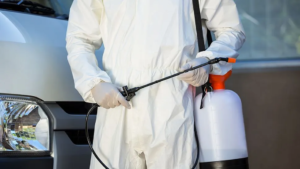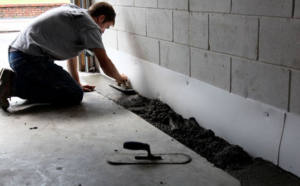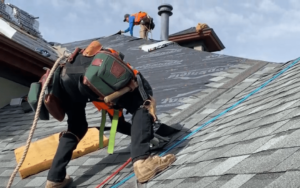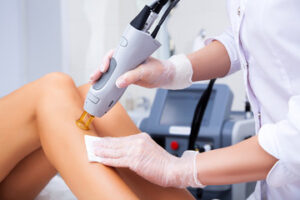Workshop Aziendale is a short intensive program for employees that offers techniques and skills in a particular field. These workshops offer tools to help employees handle change in the company, and become more resilient.

Corporate workshops cultivate team spirit and a sense of belonging among employees. They also sharpen communication, helping teams work together more efficiently.
Corporate workshops provide an avenue for employees to learn new skills and develop their talents. These training events help staff stay abreast of industry standards and keep up with technology advancements. They also foster a culture of professional growth and development, keeping workers motivated and engaged.
One such workshop is the Clifton StrengthsFinder, an assessment that identifies natural talents and strengths. The test measures recurring patterns of thought, feeling and behavior. It produces a report listing the top five strengths in ranked order. The Clifton StrengthsFinder assessment also helps individuals identify their unique strengths in the context of a team or organization.
Unlike conventional workshops, which focus on improving weaknesses, the Clifton StrengthsFinder approach emphasizes the value of building on and using existing talents. This helps employees to find more fulfillment in their work and achieve higher job satisfaction. It also enables them to develop plans that align with their strengths, helping them improve their performance at work.
In addition to helping employees recognize their strengths, the Clifton StrengthsFinder assessment facilitates improved teamwork and collaboration. When team members can identify and utilize each other’s strengths, it leads to more effective task delegation and harmonious work environments. It also allows for better problem-solving in a connected business landscape, which can be beneficial for any organization.
The Clifton StrengthsFinder assessment also provides an opportunity for participants to discover their life purpose. This discovery process is often facilitated by a trained professional who can guide the participants through a time of self-reflection and value identification. This workshop event idea enables employees to feel refreshed and renewed with a sense of purpose, allowing them to focus their energy on activities that contribute to their overall well-being.
Other popular workshop events include presentation skills training, which gives participants an opportunity to practice and refine their presentations, as well as a simulation workshop that challenges participants to solve complex problems under pressure. This type of workshop can help workers gain practical experience in areas such as customer service, sales and marketing. It can also help them develop an understanding of the underlying principles behind these techniques, so they can apply them to their everyday roles.
Inner Child
The Inner Child workshop is a series of sessions designed to help participants develop a healthy relationship with their inner child. The concept is based on numerous psychological models, including Jungian, internal family systems, and psychodynamic theory. The overarching idea is that everyone has a younger, more vulnerable part of themselves living within them. These parts may become activated during challenging or upsetting situations, such as conflict with a friend or a difficult encounter at work.
For example, if a client experiences the loss of a loved one and their Inner Child becomes activated, it could cause them to withdraw from others or to act out in unhelpful ways. Using Inner Child work can help the individual recognize these patterns and discover their root causes.
It can also be useful for those experiencing trauma or other types of severe childhood wounds. These kinds of issues can have long-lasting effects that impact career and personal relationships. Inner Child work can help heal these wounds and rewire the mind and body for more positive outcomes.
Another way that Inner Child workshop can help is by teaching self-compassion. This is the process of treating yourself with the same kindness and understanding that you would treat a loved one. It’s particularly important for those who didn’t receive much compassion as children or who experienced emotional abuse or neglect as a child. This technique can be especially helpful for those who are struggling with feelings of depression or anxiety.
During the workshop, participants are taught to use visualization and other tools to connect with their Inner Child, acknowledge it, and learn how to understand, accept, and nurture its desires and motivations. This can be done both through face-to-face and online workshops.
The goal of the workshop is to help individuals reclaim their creativity, access innate joy, and reconnect with their sense of wonder. For many adults, these elements have been lost as they’ve grown up and taken on adult responsibilities. By reconnecting with this free-spirited part of themselves, they can begin to feel happier and more fulfilled in their lives.
Emotional Intelligence
Emotional intelligence is a key component of effective leadership. People with high emotional intelligence have better communication skills, can manage conflict productively, and are able to adapt to change. Corporate workshops can provide tools to help employees develop their emotional intelligence and hone their soft skills.
Workshops are a great tool for teams to build strong relationships and communicate effectively. They also provide an opportunity to explore various solutions and ideas in a safe space where participants can feel free to express themselves. In addition to enhancing teamwork and collaboration, they can improve morale, boost productivity, and reduce turnover. These skills are essential in today’s business landscape where change is the norm.
A good workshop requires a lot of preparation. The first step is determining the purpose of the event, the target audience, and the learning goals. Once the audience and learning goals are determined, it is time to create the program and schedule. This includes sending out invitations and collecting attendance confirmations. It is also important to include an event agenda and provide resources for the participants. Additionally, it is vital to implement a workshop that is tailored to the needs of your employees.
Depending on the topic of the workshop, there are many options for training. Using an interactive format is the best way to ensure that the attendees get the most out of the event. In addition to group discussions, workshops can feature role playing and case studies. They can also include activities like team-building exercises and trust-building games.
An EQ lab is another option for companies to consider. This type of workshop allows leaders to share their own journeys and how they have grown emotionally intelligent in the workplace. This is a great way to show employees how they can incorporate these lessons into their personal lives and lead by example.
The most important element of a successful workshop is the right facilitator. The workshop leader should be familiar with the topic and have experience leading groups of participants in a similar setting. It is also helpful if they have a diverse background, which can bring new perspectives and insights to the workshop.
Sustainability and Corporate Social Responsibility
The business world is constantly changing and employees need to keep up with the latest skills and knowledge. Workshops can help them do that. They are also a great way to build team cohesion and encourage communication.
Corporate workshops are often designed to teach a specific skill, such as customer service, project management or teamwork. They may include activities such as role-playing, simulations, and group discussions to help attendees learn and practice the new skill. They may also involve exercises that promote creativity and allow participants to work together in different ways. These types of workshops are often more fun and engaging than traditional training sessions.
Sustainability and Corporate Social Responsibility (CSR) are topics that are increasingly important to businesses. Companies that prioritize sustainability can develop an innovative culture, improve their reputation, attract top talent and reduce risk. Sustainability can also help companies meet regulatory requirements, reduce operational costs and create a competitive advantage.
Developing sustainability strategies and implementing them into company culture can be challenging for small businesses. A successful strategy must take into account resource constraints and the current state of regulations and best practices in the industry. It should be aligned with the company’s mission and values and involve employees, customers, suppliers, local communities and environmental organizations. It should also be measurable and involve employees at all levels of the organization.
A CSR workshop can prepare employees for change and help them adapt to the new challenges of a company’s operations. It can teach them how to be more efficient in the use of resources, implement alternative energy solutions and design products that are environmentally friendly. This can also lead to cost savings and improve employee morale.
Workshops that focus on improving the customer experience can help employees understand the importance of putting their customers first. They can offer techniques for effective customer service and teach empathy, patience, emotional intelligence and how to handle difficult conversations. They can also help employees find more innovative solutions to problems.
Creating an effective workshop isn’t easy. It’s important to determine the goals of the workshop and choose the right type of content to meet these objectives. A strong facilitator is also essential to ensuring the success of the workshop. The right one will have experience in the topic and be able to facilitate a positive environment that fosters active learning. Providing participants with resources they can reference later can also help them reinforce what they learned.








